

A taste of summer! Great cooked. We make sauce of them. So good on pasta or pizza!
Thaw to use. Keep in freezer.
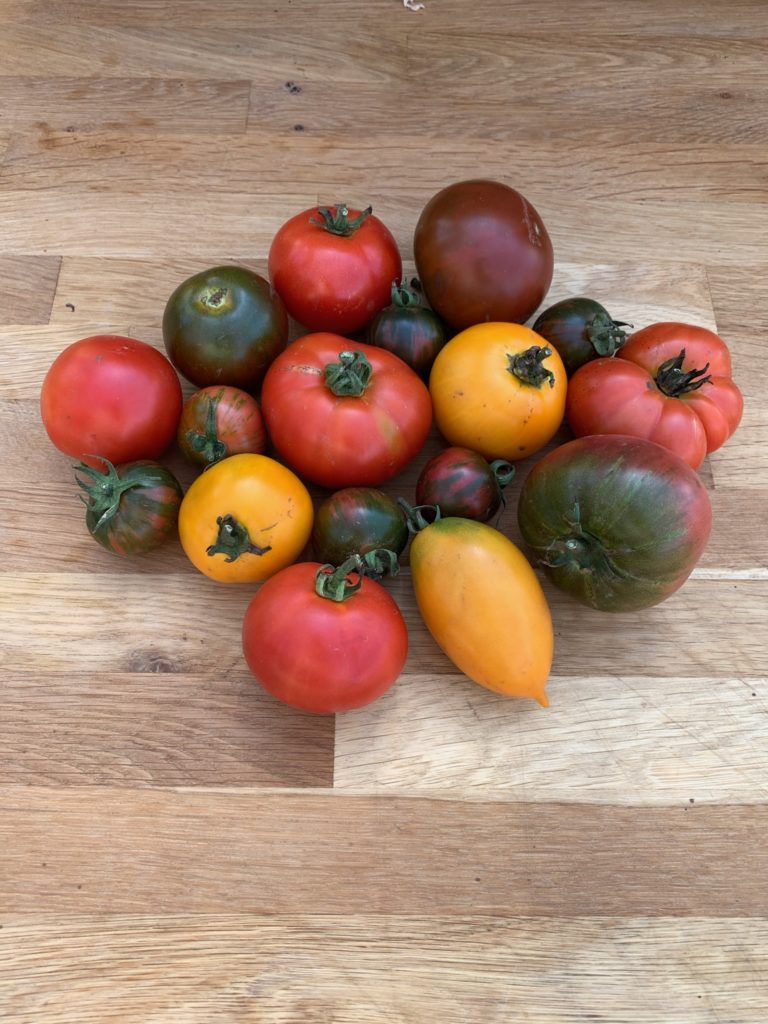
Spring onions are young onions. They have all the flavor of full grown onions in a smaller package.
Rinse. Remove root end. Greens and bulb are edible. Eat raw or cooked.
Cut off root end and wrap in cloth or paper towel. Place in a plastic bag and keep in the fridge.
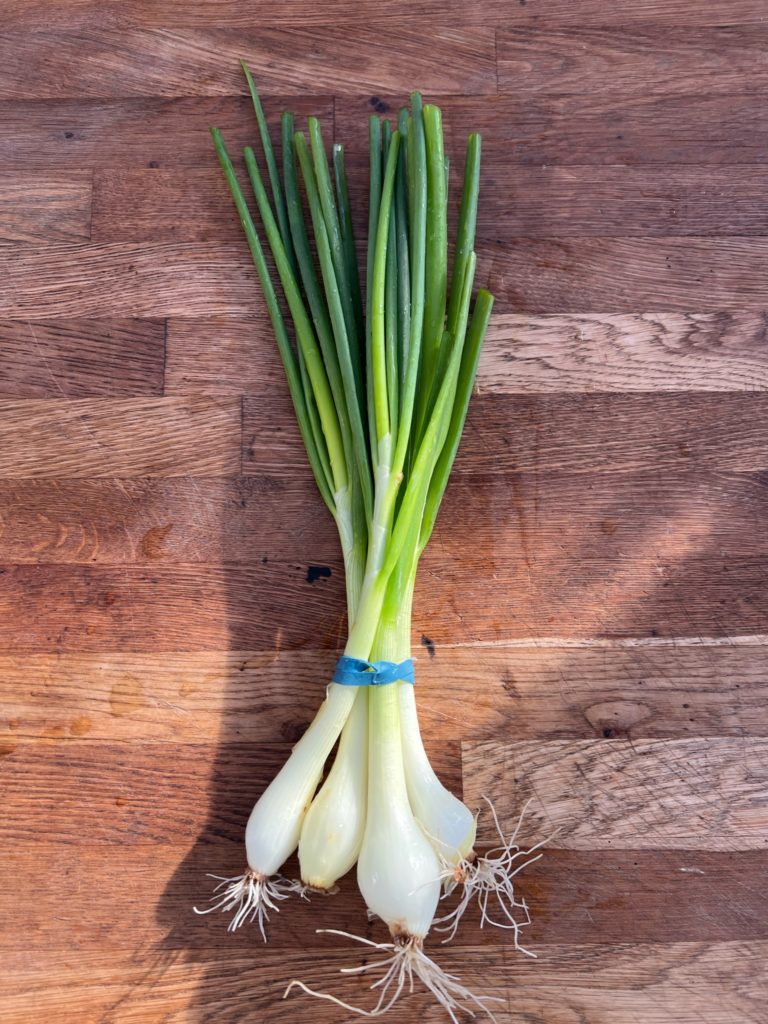
Leaf celery is way better than traditional rib celery. My favorite way to use it is in soup.
Rinse. Eat raw or cooked. Store in fridge.
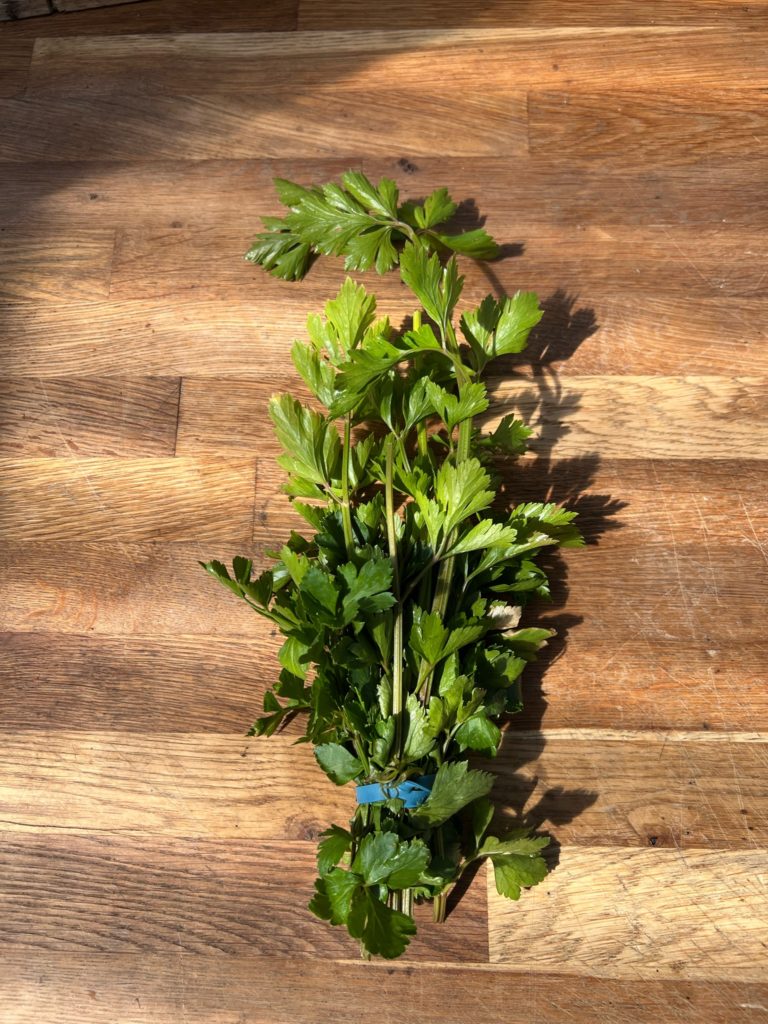
Purple sprouting broccoli is one of my favorite spring veggies! It is sweet because it wintered over and was kissed by frost. My favorite way to eat it is roasted and added to mac and cheese!
Rinse. Eat raw or cooked. Stems, leaves and florets are all edible.
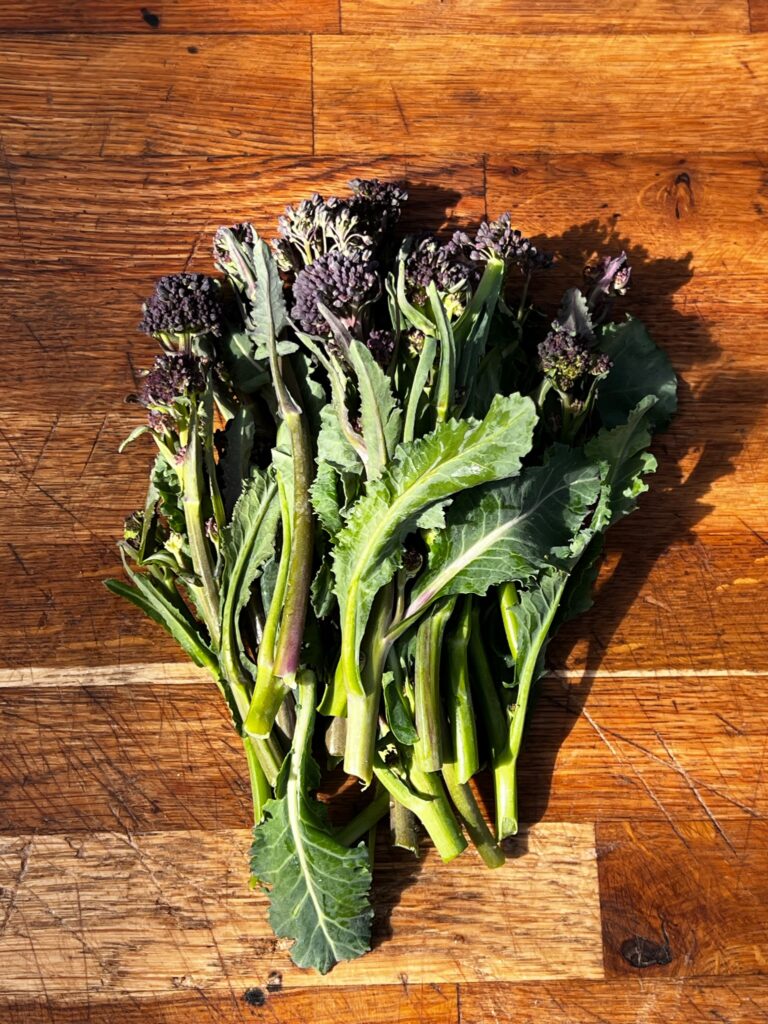
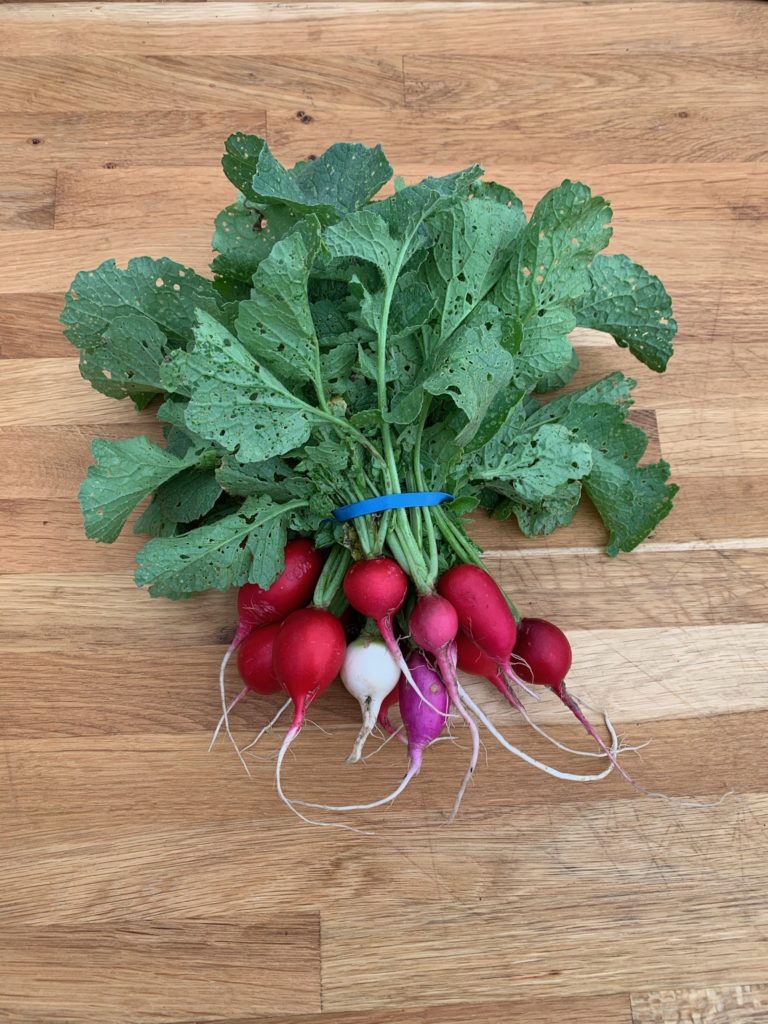
Radishes are small root vegetables known for their crisp texture and slightly peppery flavor. The flesh of radishes is typically firm, crunchy, and juicy, while the skin can range from smooth to slightly rough. They can be enjoyed raw as a snack, sliced and added to vegetable platters, or used as a garnish. Radishes also offer versatility in cooking, as they can be roasted, sautéed, or pickled to enhance their natural flavors. Rinse. Eat raw or cooked.
Remove greens for radishes. The leaves will continue to draw moisture from the root. Store the radishes and greens separately.
It's best to use the greens within a few days for optimal flavor. To store the greens, place unwashed leaves in a container lined with a dry paper towel to absorb excess moisture. Seal the container loosely to allow for some airflow. Store in the fridge. Here it will stay fresh for a few days.
Radish roots can keep for several weeks, sometimes even months, when stored in the fridge.
Rinse. The whole radish is edible, leaves and root. Eat raw or cooked. If the leaves start to wilt, you can revive them by soaking in ice water for a few minutes before patting them dry and using as desired.
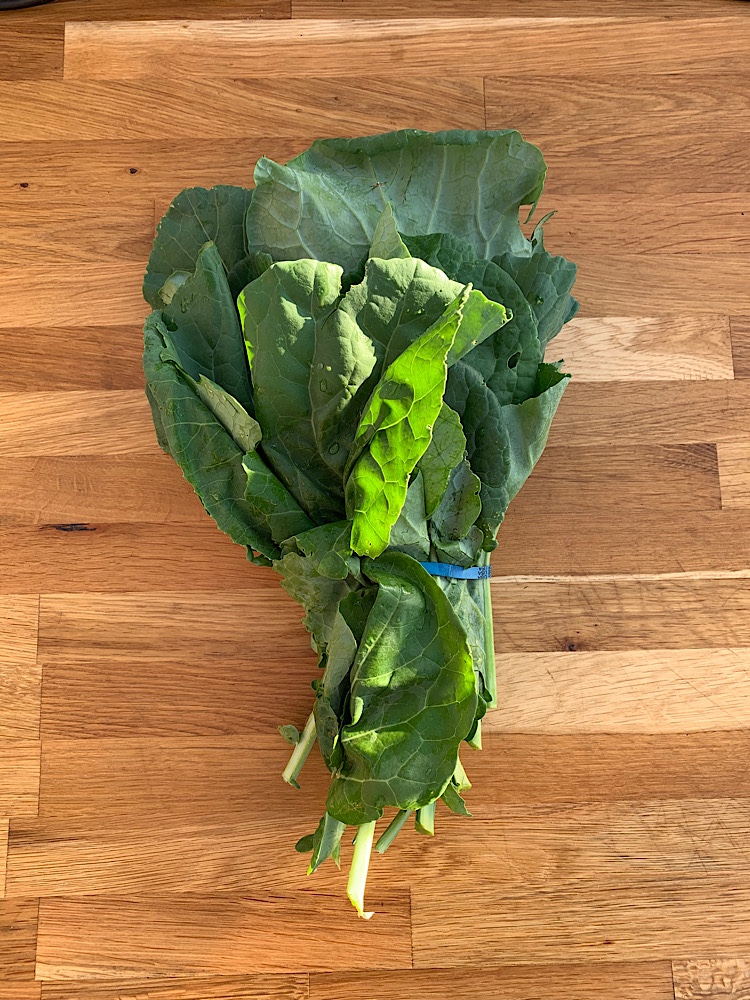
Collards are in the same family as cabbage, broccoli and cauliflower. A bitter green.
Rinse. Eat raw or cooked. Stems take longer to cook. I like to remove them and cook longer than leaves.
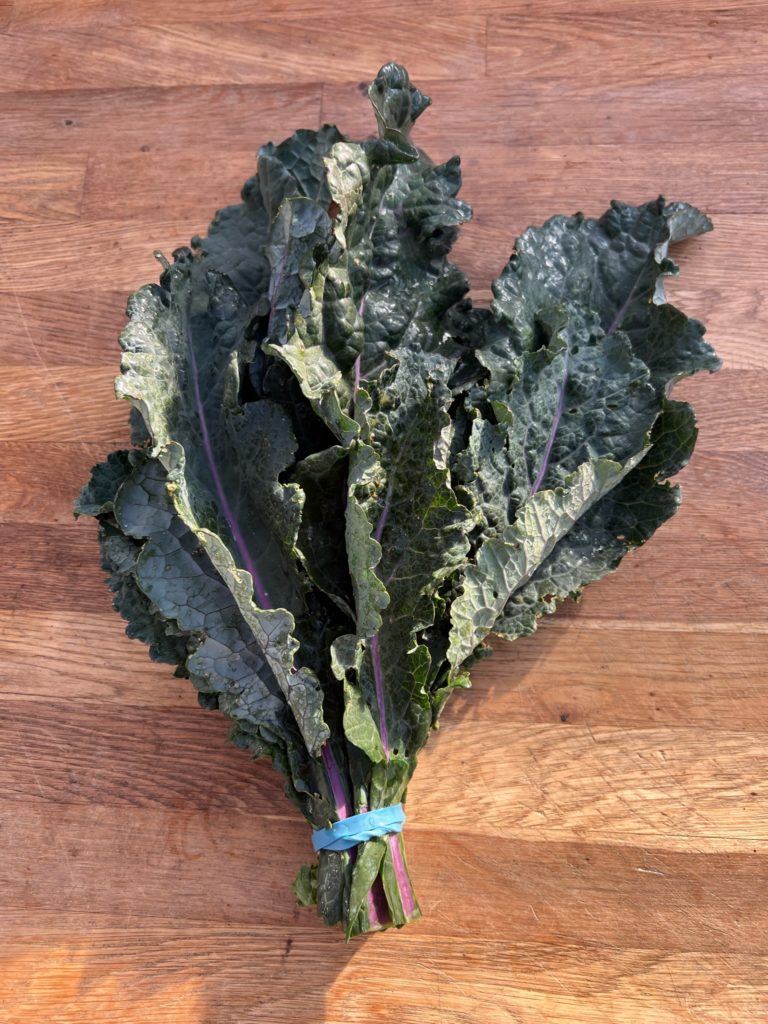
This a mix of Dazzling Blue, Red Russian and Scarlett kale.
Rinse. Eat raw or cooked. Stems take longer to cook. I like to remove them and cook longer than leaves.
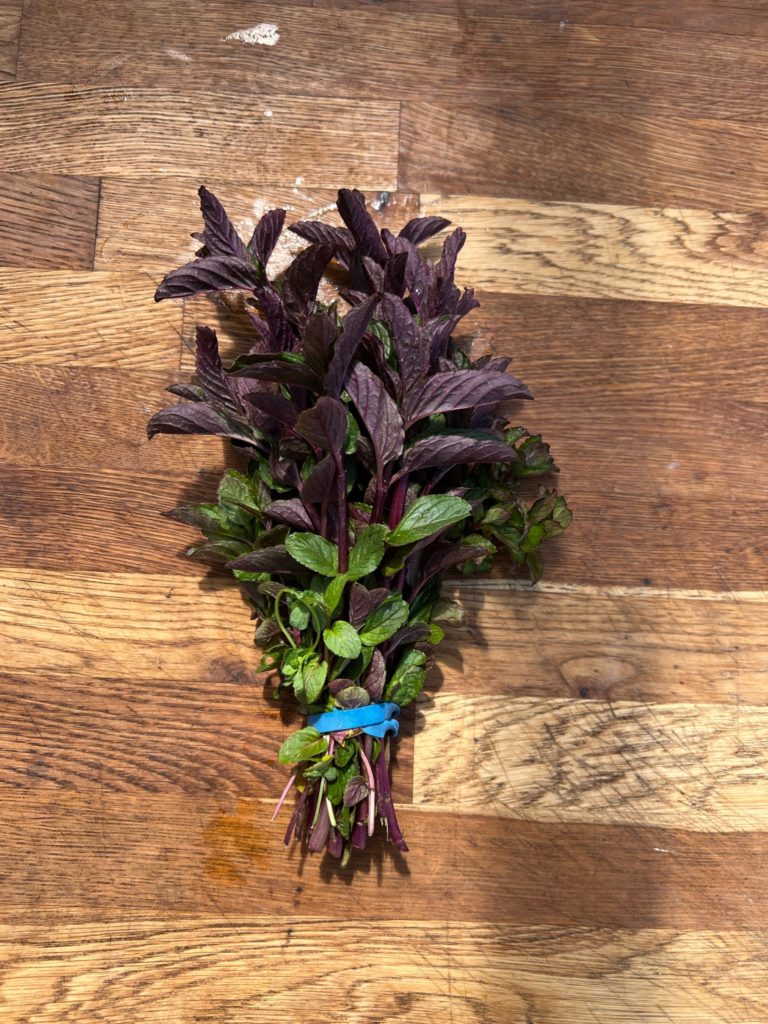
Mint is a fragrant herb known for its refreshing and cooling properties. It features vibrant green leaves that grow on square stems. Its taste is often described as fresh, aromatic, and mildly sweet with a subtle peppermint or spearmint flavor, depending on the variety. Mint is commonly used in both savory and sweet dishes, including salads, teas, cocktails, desserts, and as a garnish.
Rinse. Remove leaves from stems, chop or add whole leaves. Eat raw or cooked.
It's best to use it within a few days for optimal flavor. To store it, wrap the fresh mint in a damp paper towel and place it in a plastic bag. Store the bag in the refrigerator's crisper drawer, where it will stay fresh for a few days.
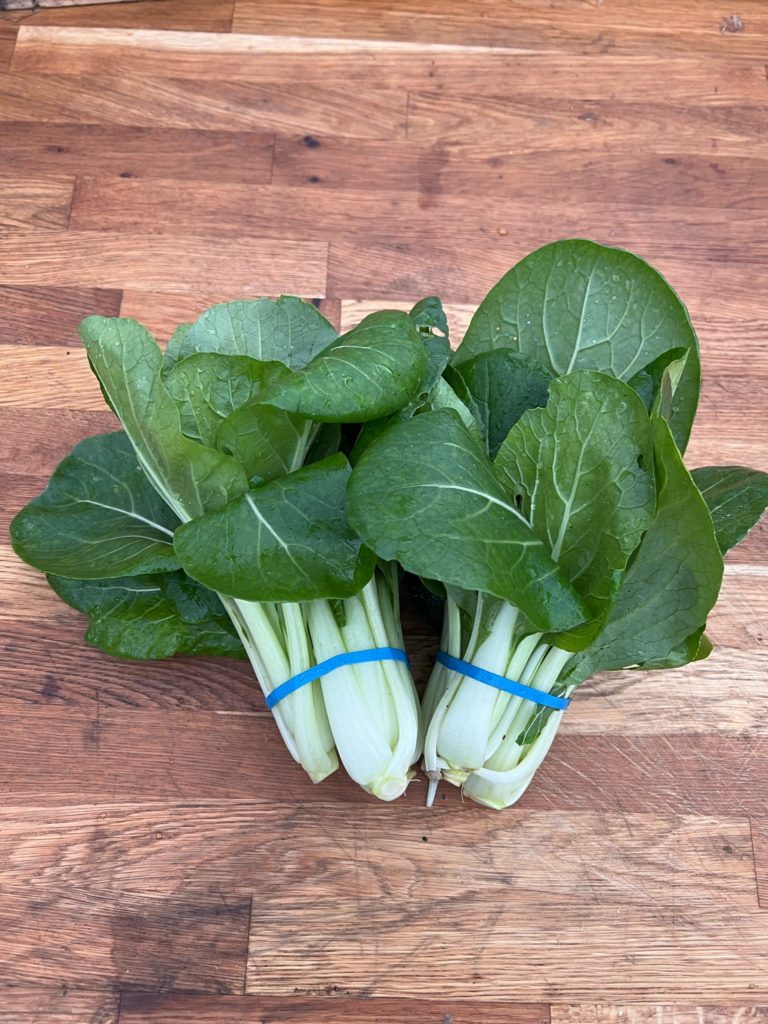
Pak choy, similar to bok choy or Chinese cabbage, is a leafy green vegetable widely used in Asian cuisines. It features dark green, crinkled leaves with white, crunchy stalks. Pak choy has a mild, slightly peppery flavor, and both the leaves and stems are edible. It is highly versatile, commonly stir-fried, sautéed, or used in soups and stews. Pak choy's tender, succulent texture and earthy taste make it a popular choice for adding a nutritious, leafy green component to a wide range of Asian and international dishes.
Rinse. Remove leaves from the base, chop or add whole leaves. Eat raw or cooked. If the leaves starts to wilt, you can revive it by soaking the leaves in ice water for a few minutes before patting them dry and using as desired.
It's best to use it within a few days for optimal flavor. To store it, place unwashed leaves in a plastic bag or a container lined with a dry paper towel to absorb excess moisture. Seal the bag or container loosely to allow for some airflow. Store the bag in the refrigerator's crisper drawer, where it will stay fresh for a few days.